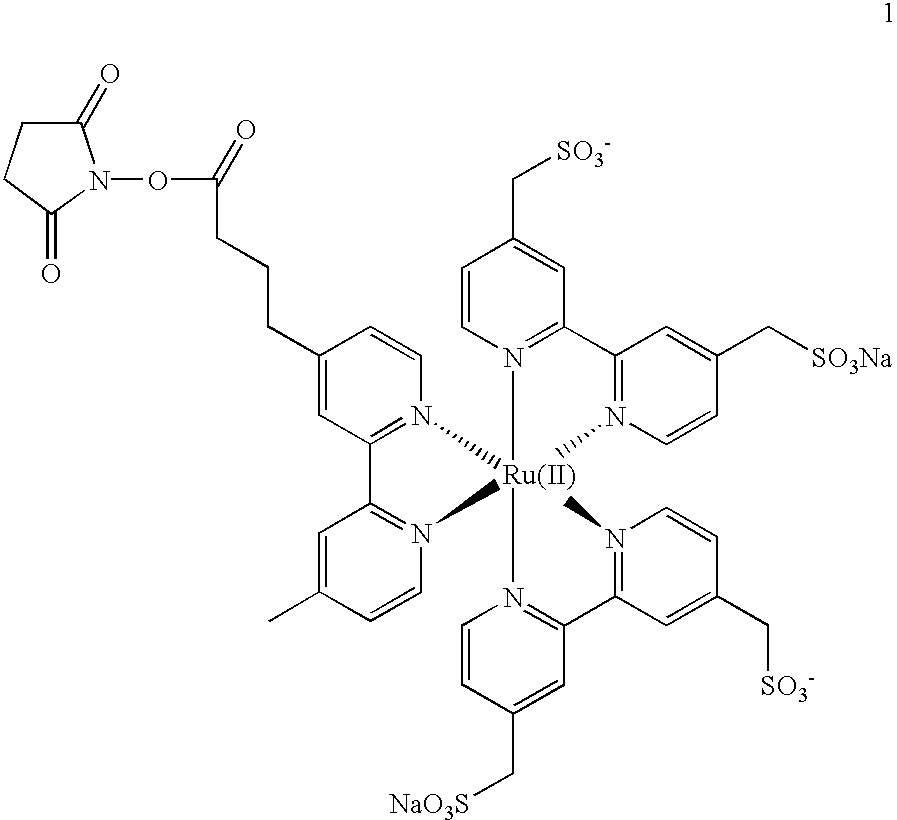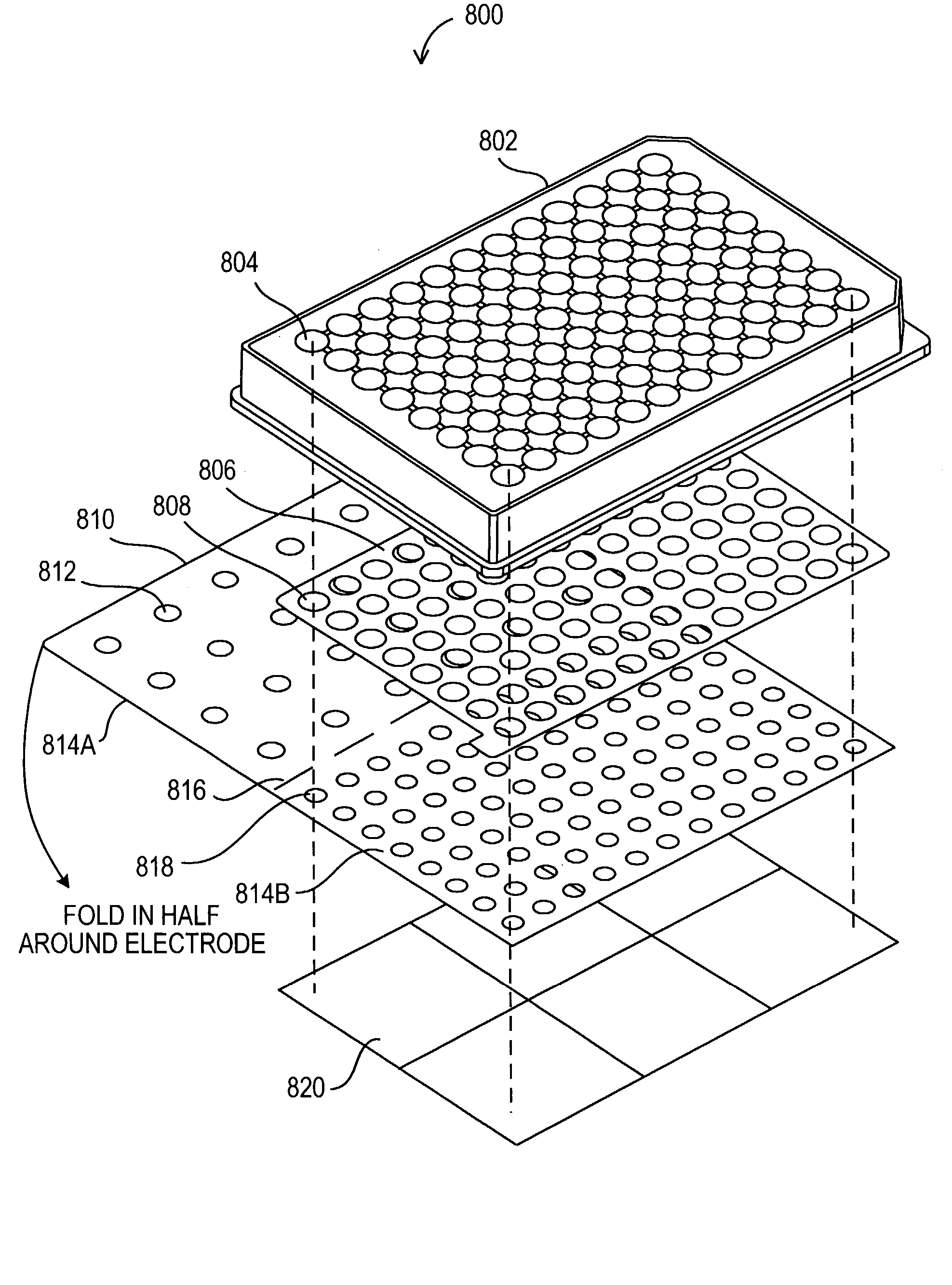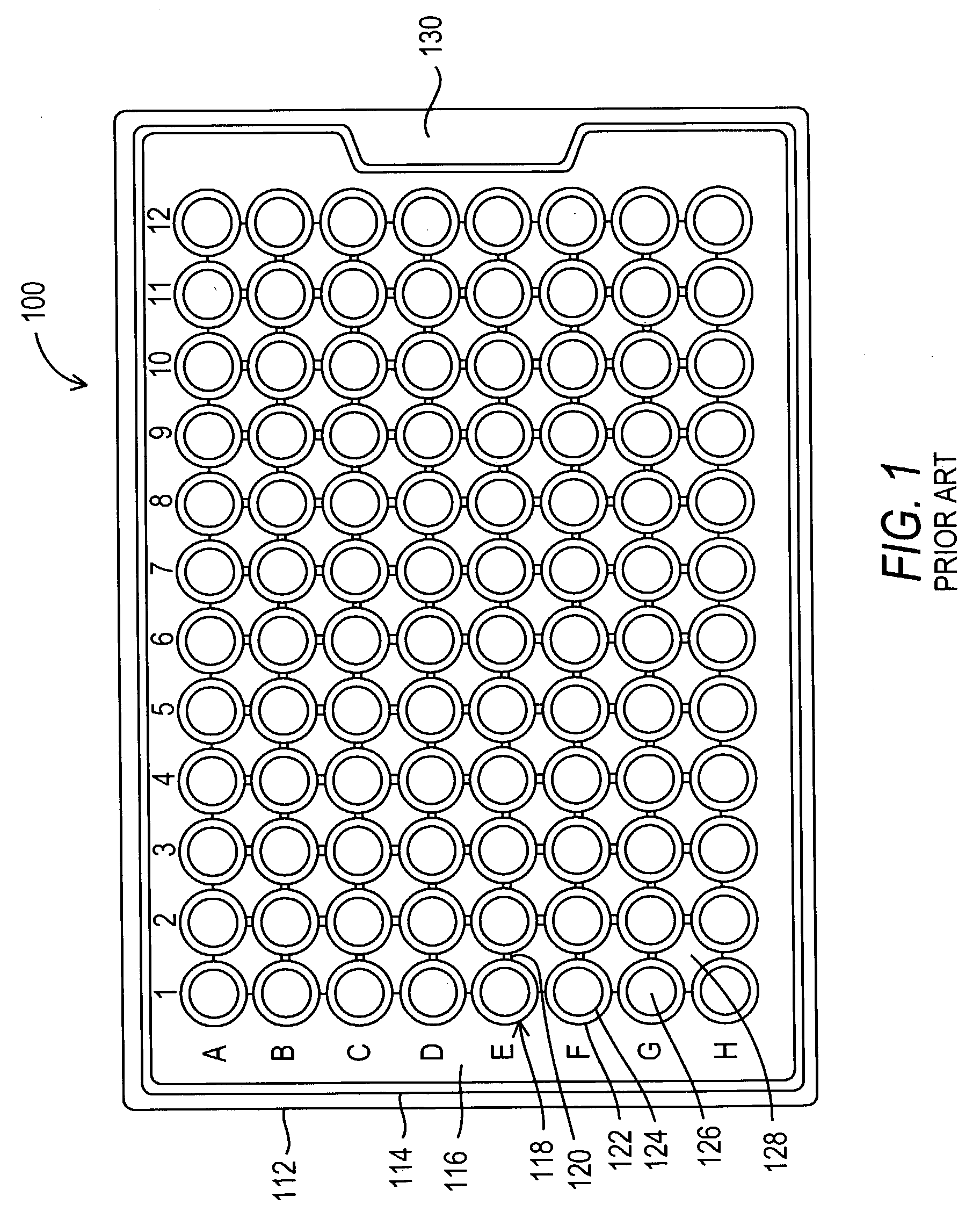Assay plates, reader systems and methods for luminescence test measurements
a luminescence test and reader technology, applied in the field of plates, plate components, kits, etc., can solve the problems of low luminescence collection efficiency, low assay throughput, and inability to commercially manufacture assay plates for measuring ecl from multi-well assay wells, etc., to achieve the effect of improving the luminescence collection efficiency
- Summary
- Abstract
- Description
- Claims
- Application Information
AI Technical Summary
Benefits of technology
Problems solved by technology
Method used
Image
Examples
experiment 1
[0905]
[0906] Procedure:
[0907] 1.0.6 grams of each type of TiO.sub.2 in powder form were weighed out.
[0908] 2.3.4 grams of epoxy were weighed out and mixed by hand with the TiO.sub.2 to give a final concentration of 15 weight percent TiO.sub.2.
[0909] 3. All the samples were then spotted onto an aluminum surface.
[0910] 4. The surface was exposed to either UV or fluorescent light for several seconds and then placed in a reader with a CCD camera.
[0911] 5. The luminescent intensity was read after 15 seconds.
3 Results: 15 wt. % TiO.sub.2 in epoxy - 15 seconds after insertion into instrument Background corrected light intensity Grade Source UV light Fluorescent R101 DuPont 19 22 R102 DuPont 28 36 R104 DuPont 13 14 R105 DuPont 15 17 R960 DuPont 13 12 RCL6 Millienium 38 44 RCL 188 Millienium 86 96 Anatase Millienium -- 25
[0912] From this experiment, the alumina surface treatment (DuPont grades) appears to reduce light emission 4-5 times compared to phosphate treatment (RCL 188) and by 2-3 ti...
experiment 2
[0914]
[0915] The above experiment was repeated for three forms of the TiO.sub.2 tested above compounded into polystyrene at .about.5 and 15 weight percent using a tungsten light source. Samples were measured in triplicate. The light intensity was read at 15 seconds after insertion into the instrument.
4 Results in polystyrene - 15 seconds after insertion into instrument Concentration Background corrected light intensity Grade (wt. %) Mean Standard Deviation R104 16 14 2 R104 5 30 7 R960 19 16 1 R960 6 6 1 RCL 188 16 84 19 RCL 188 5 10 1 Polystyrene 0% TiO.sub.2 0 0
[0916] Again, the alumina coated TiO.sub.2 emitted less light than the silica coated material. For R104, the emitted light decreased with increased TiO.sub.2 concentration. The experiments were repeated with the same results. The concentration of TiO.sub.2 for the R104 samples was verified by an independent measurement.
PUM
| Property | Measurement | Unit |
|---|---|---|
| Length | aaaaa | aaaaa |
| Fraction | aaaaa | aaaaa |
| Fraction | aaaaa | aaaaa |
Abstract
Description
Claims
Application Information
 Login to View More
Login to View More - R&D
- Intellectual Property
- Life Sciences
- Materials
- Tech Scout
- Unparalleled Data Quality
- Higher Quality Content
- 60% Fewer Hallucinations
Browse by: Latest US Patents, China's latest patents, Technical Efficacy Thesaurus, Application Domain, Technology Topic, Popular Technical Reports.
© 2025 PatSnap. All rights reserved.Legal|Privacy policy|Modern Slavery Act Transparency Statement|Sitemap|About US| Contact US: help@patsnap.com



